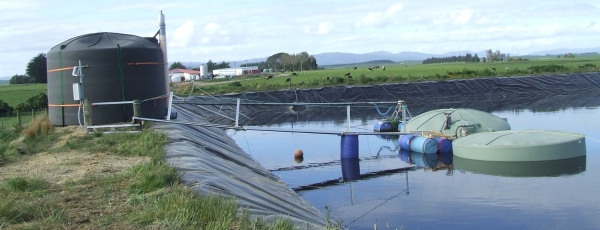Better management of farm dairy effluent is a high priority for New Zealanders. NIWA is working to improve understanding of effluent volume and quality, to aid industry planning and practices.
Better management of farm dairy effluent (FDE) is a key priority for the New Zealand dairy industry, regulatory bodies and the public. Inadequate management of FDE can lead to multiple environmental and agronomic issues, such as excessive nutrient loss to ground and surface waters, increased farm Greenhouse Gas (GHG) emissions and failure to realise the fertiliser nutrient and bioenergy value of FDE to its fullest extent.
Accurate determination of FDE quantity and quality is a prerequisite for accurately assessing the potential problems and opportunities that FDE may represent for a specific dairy farm. However, a large number of industry models and statistics, as well as decision-support tools, are based on a very limited number of guideline datasets; some of which were collated decades ago. Considering that dairy farming practices in New Zealand are changing rapidly and intensifying, ’standard industry figures’ need to be validated under today’s field conditions and updated if necessary.
As part of a dairy farm effluent pond monitoring program, effluent volume and quality was measured at three farms in Northland, Waikato and Southland. The results indicate very large variability in effluent flow and quality, both between farms and between different sampling periods at each farm.
On a per-cow basis, effluent volumes, nutrient concentrations and, as a consequence, secondary environmental parameters such as effluent management methane GHG emissions per cow, varied several-fold. While traditional ’all grass’ based dairy farms recorded annual average FDE flows and solids and nutrient loads consistent with older literature figures, monitoring of a farm with intensive feed pad use showed that the total annual farm waste solids and nutrient amounts can be several-fold above ‘standard industry figures’.
Both the high level of variability, as well as the high FDE solids and nutrient volumes of more intensively managed dairy farms recorded during this study, can have a range of consequences for effluent GHG emissions management and appropriate effluent land application. Wherever possible, actually metered data of effluent volume, solids and nutrient concentration and volumes should be used for planning improved effluent management systems and techniques to optimise environmental outcomes.


